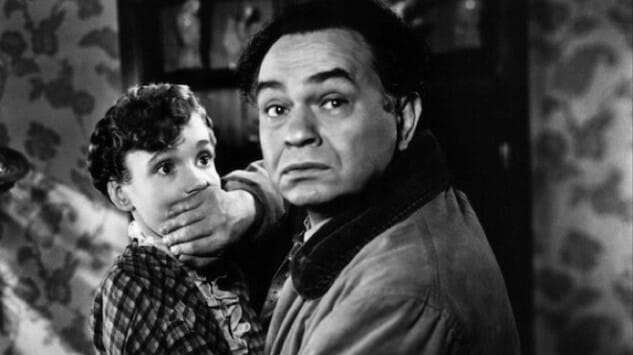
This post is part of Paste’s Century of Terror project, a countdown of the 100 best horror films of the last 100 years, culminating on Halloween. You can see the full list in the master document, which will collect each year’s individual film entry as it is posted.
The Year
If 1946 was a notable step down from the high-volume horror releases of the 1940s to date, then 1947 is when the genre truly falls off the map again, to a place it hasn’t been since 1937-1938. This is the beginning of the darkest stretch in genre history, and unfortunately we’re not talking about the dire content of the films themselves.
Why did horror essentially fade into obscurity, just a few years after being one of the most prolific film genres in Hollywood? Many potential causes have been advanced, most notably the idea that film audiences, having now grappled with the horrors of the second world war, splashed across newspapers, magazines and film strips, had become inured to the style of horror found in Universal monster or ubiquitous “mad doctor” films. This might well have been the case, given that horror returned in force looking fairly different in the early 1950s, but it seems equally likely that the studios of the day simply thought the genre’s era of marketability had passed. Films like House of Dracula had shown the lack of vitality remaining in some of the stock characters who had been horror’s surest bets in the preceding years, and there was still the matter of the Production Code to contend with as well.
The result, at least in the U.S., was almost total genre hibernation. You’ll still find some film noir entries here that contain horror elements, and the occasional non-U.S. horror film, like this year’s Uncle Silas/The Inheritance from the U.K., but the pickings here are very slim.
1947 Honorable Mentions: Uncle Silas
The Film: The Red House
Director: Delmer Daves
Is there such a thing as “country noir”? The existence of The Red House begs the question, as Delmer Daves’ film ably captures the visual aesthetic usually found in urban, hard-boiled detective stories and instead transfers it to a patch of isolated farmland in the middle of the American heartland. The results are distinctive, containing some of the fantastical rural elements seen in the likes of The Night of the Hunter, but with an even darker visual aesthetic. The Red House is almost completely suffused in shadows, in a not-so-subtle visual allusion to the pent-up secrets shared by its characters. Suffice to say, there are some serious skeletons in these closets.
The film is about a handicapped farmer and his sister, who live on a remote farmstead with their adoptive daughter, Meg. As Meg grows close to one of the family’s hired hands, Nath, the two stumble onto the existence of a mysterious “red house” that exists somewhere in the recesses of the property owned by her adoptive father. But as the young lovers grow curious about the connection between Meg’s father and the house, events simultaneously conspire from several angles to separate the two.
The great Edward G. Robinson, veteran of numerous noir and gangster films, plays the peg-legged farmer Pete, who comes off first as an object of sympathy, and then possibly a source of malevolence. As the investigation into the “red house” continues, his sanity starts to slip, but is it the result of victimhood, or guilt?
Highlighted by a creepy, anxiety-tinged score from Miklós Rózsa, The Red House plays like a melodrama by day, and a horror film by night. It does an excellent job of teasing the possibility of the supernatural, while never making anything concrete, allowing for several potential interpretations. With a conclusion whose implications are considerably more shocking than one would expect, it makes for an understated, under-seen 1940s psychological thriller.
Jim Vorel is a Paste staff writer and resident horror guru. You can follow him on Twitter for more film and TV writing.